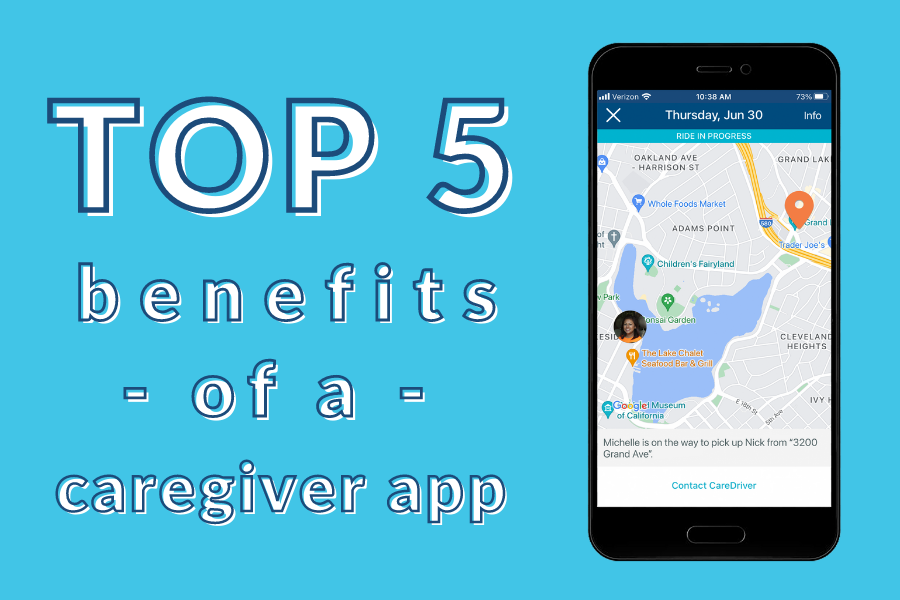Partnerships: The answer to post-pandemic school transportation challenges
Coauthored by Tim Ammon
As schools reopen, and the ‘new normal’ of school transportation continues to evolve, new questions open up: What will parents and/or caregivers expect in post-pandemic school transportation? Will parents opt their children out of taking the school bus? If so, will they be driving their children or will they ask for alternative modes of transportation? And what does that look like for school transportation staff?
It’s not hyperbole to suggest that how these questions get answered will have generational impacts on individuals and society. As a result, we need to start thinking deeply and reacting creatively to ensure that safe and reliable services are available as soon as students need to access them.
The state of school transportation today
Learning loss during virtual instruction is a major concern, especially in underrepresented communities and for youth with special needs. There is both a need and demand for in-person learning to address the loss accrued during school closures.
Safely accomplishing this requires us to think systematically about the end-to-end processes and services of education, and nothing better describes the first contact and last contact with the educational system than the transportation service students use to get to school.
Providing logistics services to students during the pandemic and when the virus is endemic is complex. It will require us to operate at the intersection of individual concerns about if and when to get vaccinated and systemic concerns about the need for high rates of vaccination to restore confidence in the system.
While the CDC Director says that teacher vaccinations aren’t a prerequisite for returning to in-person instruction, teachers and faculty have expressed concerns about returning — concerns which may be alleviated by vaccination. But it’s up to each state — really each county — to decide how they’re prioritized.
For instance, school employees are eligible to receive a vaccine in California. Yet, Los Angeles County will only permit teachers to get vaccinated if they meet other criteria, such as being age 65+. On the other hand, Long Beach has approved vaccine access for all educators (although teachers report it is hard to get appointments.)
This makes it unclear when those in the education sector will start getting their vaccines. With the tiered roll-out, as well as the Pfizer and Moderna vaccines requiring two shots a month apart, it will take a while for everyone to receive the full vaccine treatment, even if school staff were all cleared to get vaccines today. This doesn’t even take into account that some educators and school support staff may refuse the vaccine.
In addition, new variants and mutations of COVID-19 are entering communities, complicating reopening dates and potentially social distancing guidelines.
All of these factors demonstrate that the en masse return-to-school process could be more difficult and more complicated than expected.
Upcoming school transportation challenges
The difficulties of enabling student access to school will require school transporters, administrators, parents and all other stakeholders to think broadly what transportation means. Mixing and matching service strategies and service providers to best meet the demands of what are likely to continue to be non-traditional schedules will be the key challenge for transportation administrators.
How we integrate these multimodal designs is a much more relevant question than if we will have to integrate alternative services. The reality is that there were not enough resources in traditional school transportation structures before the pandemic, and that problem will only get more difficult coming out of it.
With expectations for physical distancing likely continuing for the medium-term, school bus capacity will continue to be constrained. Even with rigorous distancing, the truth is that parents may opt out of sending their children on the school bus, feeling that they can avoid yet one more gathering place.
Hybrid schedules that include complicated and unbalanced distribution of students will increase the need to more effectively match supply and demand. The students who do opt in to school transportation, and the expectations for service on more varied schedules, is likely to cause disruption to traditional routing strategies.
Who will service those routes also remains an open question. Unfortunately, the bus driver shortage is about to get worse, with many bus drivers in the older demographic and more vulnerable to COVID-19. As bus drivers retire, it has become more difficult to hire new, younger drivers when private sector jobs can be more lucrative.
How we will pay for continuing services will also be challenged. With funding dependent on ridership in many locations, what will future budgets look like? Who will be considered a rider? Only students on buses, or students in smaller vehicles, students being serviced by alternative service providers? Financing capital purchases like buses, facilities and operating costs for people and materials will all be disrupted by the decisions related to who is a rider in the coming years. The impact of lower funding across education should give some pause to managers on the impact to safety, service availability, and staffing.
New modes of transportation
The scope of changes within the broad definition of student transportation are likely to be profound in a post-COVID environment. This necessitates a rethinking of traditional solutions to determine if, with all these factors, we will require complementary alternative modes of transportation.
Likely reductions in education and transportation- specific funding will make the pursuit of options that enhance flexibility while controlling costs will be increasingly critical. All of this will be done in the context of ensuring that the safety protocols for operations are not compromised and may be enhanced.
These factors require a search for additional options and capacity, whether that be finding new routes within an existing system or supplemental capacity from outside the system. Finding a strong partner who understands the needs of student transportation and the safety features parents and caregivers expect is critical.
The use of alternative services to provide both low density and core services must be a consideration to accomodate what are likely to be continuing challenges related to physical distancing, resource availability and time constraints.
Using HopSkipDrive as an example of one solution, their transportation network company model specializes in arranging transportation for students who don’t fit into traditional transportation routes.
The technology platform enables Ride Organizers to match students who need rides with highly vetted CareDrivers, most of whom drive sedans with a three passenger capacity. Flexible, dynamic driver supply means school rides are always guaranteed and can be scheduled with less than eight hours notice.
While in large part used to enable transportation for students designated McKinney-Vento, those in foster care and students with IEPs, the solution can meet the needs and demands of post-pandemic, general education transportation in cases where the school bus proves less efficient. It can make the logistics of hybrid schedules easier, fill in for bus driver shortages and give parents and caregivers peace of mind that their children won’t be in a high-density schoolbus.
In addition, HopSkipDrive COVID-Safe Ride Standards include tech-enabled confirmations of health and disinfection, innovative features like plastic dividers between front and back seats (that school buses unfortunately can’t implement) and anonymous exposure tracking for schools.
Critical considerations for specialized populations
The challenges of transporting students with specialized needs will be an ongoing point of focus for transportation managers and school districts. These students were disproportionately affected during the pandemic, and will need reliable, safe transportation to their schools of origin, IEP appointments and other services to reestablish a sense of normalcy.
With pandemic-driven job loss, we unfortunately expect to see higher numbers of students experiencing homelessnessm who will need specialized transportation services.
In addition, youth with special needs lost access to critical in-person appointments and help; they’ll likely need extra services to make up for the lack of social and academic services. As was evident during the pandemic, transportation systems were challenged with establishing the flexible models needed to support scheduling. Youth with special needs, those experiencing homeless, and those in foster care will continue to have varied and uncertain schedules.
The flexibility and resiliency of transportation partnerships is a cost-effective and efficient alternative. Alternative solutions have long been the answer to specialized transportation needs, whether that be the use of TNCs or broker services. HopSkipDrive’s flexible model streamlines operations and makes it cost-efficient to provide safe, reliable alternative transportation.
In addition, with mental health concerns for students struggling with distance learning and the trauma of the pandemic crisis, it’s important to note that HopSkipDrive CareDrivers are required to have five years of caregiving experience and are connected with resources on trauma-informed care and best practices for working with someone with special needs.
For many students, CareDrivers provide a sense of consistency and reliability, crucial after months of isolation and losing the consistency of teachers and other caring adults at school. CareDrivers book-end a child’s day with empathy, understanding and positivity.
Continuing expectations for data visibility and data management
The efforts underway to ensure that student-specific data is maintained for purposes of contact tracing and capacity management is a trend that will likely continue following the pandemic. Operational practices over the next 18 to 24-months will continue to resemble the structures that have been developed to respond to the pandemic.
Scheduling changes (hybrid days, service cancellation because drivers are unavailable, students needing to go home if they feel sick) and confusion related to it, means that information gathering and distribution will be increasingly important. Parents and/or caregivers will want to remain in the loop now more than ever.
The usefulness of this student-level visibility goes well beyond just contact tracing and keeping families apprised of their student transportation schedule. Budget constraints will increase the pressure on transportation departments to maximize the use of available resources. This will necessitate the ability to more effectively deploy resources “on the fly” and create on-demand routing solutions to address driver shortages and vehicle availability challenges.
The ability to acquire and implement the technologies required to meet these expectations will have an impact on transportation budgets and operations. Partner organizations that come with these tools and technologies can greatly enhance operational performance and flexibility. One substantial benefit of an alternative transportation partnership can be acquiring these technical capabilities without having to acquire the hardware and software.
Using HopSkipDrive as one such solution, the platform’s technology can be utilized to build, schedule, edit and track rides. It also streamlines communication to families and enables anonymous COVID-19 exposure tracking for school clients. Their data-driven approach and proactive business reporting can be used by HopSkipDrive’s partner agencies to identify otherwise unobvious opportunities for flexibility and efficiency.
What will the future hold?
One clear benefit of the pandemic is that it demonstrated how integral and imperative that student transportation is to the success of both students and families. The need for effective and efficient access to educational resources that can be delivered on a timely and predictable basis has never been more apparent. What was also true is how difficult it is to accomplish those goals when the environment is as dynamic as it was and remains during COVID.
It appears likely that the varied scheduling strategies used by schools and school districts across the country are an element of the pandemic response that is here to stay. As a result, the flexibility needed in the transportation systems of the future will require that broader and more robust partnerships be developed across the landscape of public and private sector providers. These partnerships will have safety, creativity, flexibility, and resiliency as their foundation.
The need to open schools has never been more clear or more urgent. The economic health of communities and the mental health of students and staff have created exigencies that require us to reconsider all the old habits and histories that guided how transportation systems were developed.
The development of robust partnerships with high quality service providers that extend the flexibility and capability of school transportation systems is the challenge that must be met. Partners like HopSkipDrive can and will be an enabler of those capabilities as part of its efforts to promote individual student and community success through education.

ABOUT TIM AMMON
Tim is a Co-Owner of Decision Support Group and has been providing consulting services to public and private sector clients for nearly 25 years. Much of his worked has focused on organizational improvement and routing efficiency and effectiveness. Tim has worked with hundreds of customers in multiple countries to design student transportation systems that deliver safe, efficient, and cost effective services.


